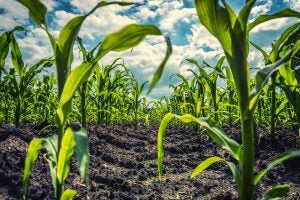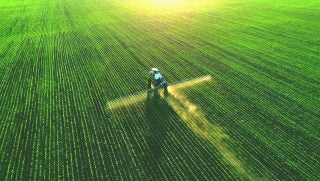Did you know there’s over FOUR THOUSAND uses for corn?
When most people think of corn, they may think of the delicious sweet corn on the cob we eat directly, but that actually only accounts for 1 percent of U.S. corn acreage! What I’m talking about is field corn, which primarily dots the landscape all across the Midwest … also known as the “corn belt.”
If you live here, you may get sick of looking at it and wonder why we have so much, but the reality is that about one in four of these acres is grown for global export. When you think of field corn, you may think of processed food like high fructose corn syrup, although only about 12 percent of field corn ends up in the “junk food” market, which is pretty crazy when you think about it considering nearly 80 percent of processed foods contain some sort of byproduct from corn, soy, wheat, or other commodity grains.
But why?
The shelf life is long, and the product is inexpensive. Should we wish to feed the masses affordably, deliciously, abundantly, and conveniently, corn plays a huge role. Want to help the hungry by donating non-perishable food items? Thank the almighty corn crop. Yes, “junk food” should generally be consumed in moderation, but it doesn’t take away from the fact that the foods are selling everywhere we look. The average person eats 25 pounds of corn per year.
So besides human nutrition — high fructose corn syrup and similar products — a vast majority of field corn goes to ethanol and livestock feed. Ethanol sometimes gets a bad rap from critics, but if you look at the byproducts from ethanol plants, we actually get very useful products like pet food, dry ice, road salt, livestock feed, and most importantly alcohol! (You can’t get drunk without farmers!). Part of the reason for this is that corn is made of different components — starch, protein, fiber, oil. All of these components play a different role in products we use everyday.

On that note of livestock feed, we also get a ton of byproducts from the animals that eat the corn! There is 185 uses for a pig alone, from soaps, fine bone china, beer filtration, cement, renewable energy, and instrument strings, just to name a few. Corn really does make the world go round.
Aside from these major products, corn also makes up very handy products like tires, fireworks, plastics, pharmaceuticals, shoe polish, sandpaper, carpeting, diapers, toothpaste, and shampoo. Again, it keeps products more affordable, sustainable, biodegradable, etc.
The U.S. is the No. 1 producer of corn in the world. Planted on over 90 million acres, it is valued at a $47.46 billion industry, according to the USDA and the National Corn Growers Association. We have the perfect growing conditions for it — the right soil type, rainfall, temperature, etc. It could be similar to growing coffee in Colombia for example. They’re they leaders of coffee production, so it’s everywhere. Different regions around the globe lead the way for their respective crop and are involved in global trade.
The next time you’re driving past a U.S. cornfield, be thankful for all the products we get from this very useful and affordable crop!
Michelle Miller, the Farm Babe, is an Iowa-based farmer, public speaker, and writer, who lives and works with her boyfriend on their farm, which consists of row crops, beef cattle, and sheep. She believes education is key in bridging the gap between farmers and consumers



